Can engine cleaning maintenance products likes oil additives, injector cleaners and flushes really affect your engine’s performance and if so, how does it work? We ask LIQUI MOLY to explain all.
Flushes, additives and cleaners for your engine can feel a bit like snake oil because they do their job in the heart of the engine, hidden from our eyes, but do they really affect your engine’s performance? To find out more, we put a number of questions to the experts at LIQUI MOLY to see if they can help explain how their own products work and what evidence they have. We’ve concentrated on the oil for a car’s engine along with the petrol or diesel that’s fed into it.
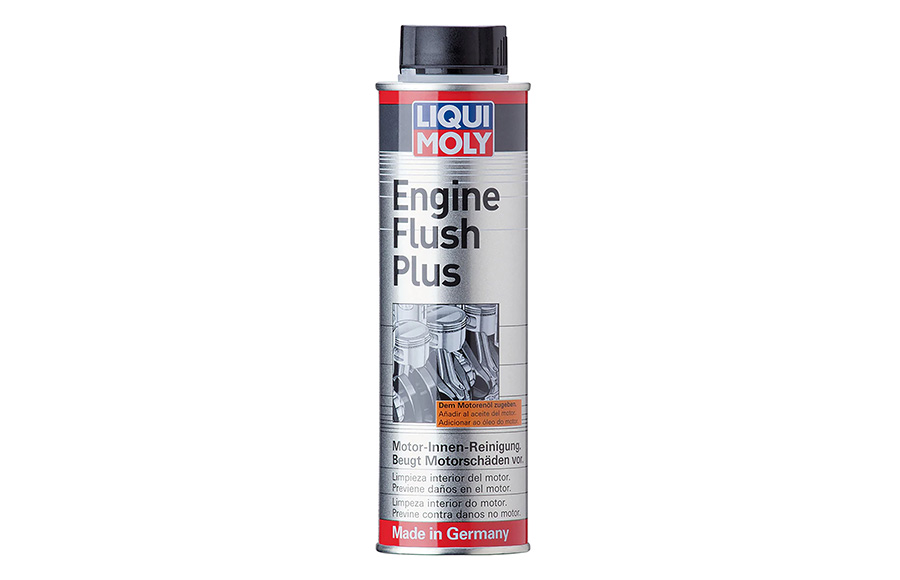
Flush First
Prior to an oil change, an engine flush can be added to the old engine oil, but how should it be applied and what does it do to the inside of the engine?
After adding an engine flush to the engine oil, such as LIQUI MOLY Engine Flush Plus, the engine must be run for 10-15 minutes, but do not drive the vehicle. During this time the chemical agents dissolve deposits and sludge which then are drained together with the used oil.
What sort of chemical agents are used in your engine flush and how do you know that when mixed with engine oil, they can remove deposits and loosen sludge inside an engine?

It contains a special combination of mild solvents based on hydrocarbons, a detergent-dispersant package and a viscosity index improver. The solvents reduce the viscosity of the motor oil, so the engine is more exposed to wear and tear. This is why there are also chemical anti-wear agents included which offer additional protection to the engine.
Surely modern engine oils already include additives that help to remove deposits (eg carbon deposits)? If so, then providing you stick to the recommended oil change intervals and use a good-quality oil, would an engine flush really make a difference?
Oh yes, it does. You already did a great job in picking the correct oil and in adhering to the oil change interval. But Engine Flush Plus is simply a thorough, more intense cleaning. Imagine you have been working on your car and your hands are dirty. You can use ordinary soap to clean them, but it is more effective if you use handwash paste.
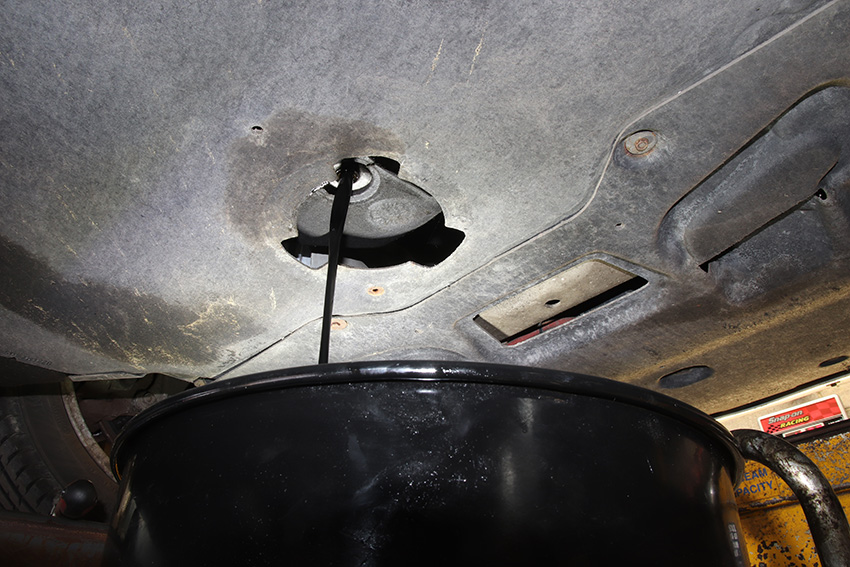
The Right Oil
Is it really that important to use exactly the right oil for your engine?
Motor oil is like a fluid spare part which needs to fit precisely to the car. Using the wrong oil is like installing the wrong spare part. The consequences range from increased build-up of oil sludge, increased wear and tear and damaged exhaust gas treatment systems. Even severe engine damage may happen.
There are currently more than 50 different oil specifications for cars, which makes things complicated. The online oil guide at www.liqui-moly.com is a useful tool. Just enter the licence plate number and you get a list of oils all suited for that specific vehicle. LIQUI MOLY carries the right oil for almost every vehicle on the road.
But surely every fully synthetic 5W-30 for instance, is the same?
No, they are not, unfortunately. 5W-30 simply describes the viscosity, which is only one of the many properties of a motor oil.
Rumour has it that some oil manufacturers use recycled oil. Is it true and if so, is it a problem?
A: Motor oil consists of two main components: base oils (the oily fluid) and additive packages (which deliver most of the performance of the finished motor oil). Used oil can be re-refined in order to get an equivalent to simple mineral base oils. They are good for industrial purposes and for oil for lawnmowers, for instance. But usually modern engines require a performance level which cannot be met by these re-refined base oils.
So LIQUI MOLY doesn’t use recycled oil?
A: No, not in oils for cars.
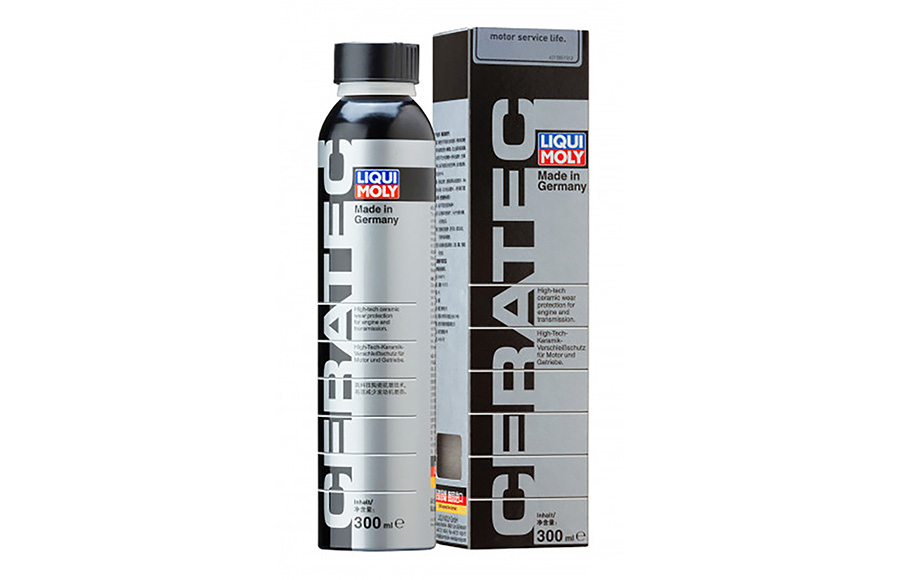
Additive Protection
If many modern engine oils are already equipped with additives to help protect the internals of an engine from excessive wear, is there any point in using an aftermarket additive, such as LIQUI MOLY’s Cera Tec?
Though high-quality oil offers good protection, the engine still suffers from wear and tear. This can be reduced further by Cera Tec. It is like getting surprised by rain on a walk. Your coat will keep you dry, at least for a while, but an umbrella offers better protection.
And how exactly does Cera Tec work?
This is a high-tech wear protection additive which protects the engine twice, chemically as well as physically. Chemically because of friction modifiers which smooth the metal surfaces. Physically because of tiny ceramic particles which form a protective layer on the metal surfaces and reduce the metal-to-metal contact. This gives the engine an extra protection not only at high rpm but also in case of an oil loss.
How do you know that those ceramic particles inside Cera Tec will stick to the metal surfaces inside the engine and not become mixed up with the oil?
In fact the ceramic particles do mix with the oil. And they have to. This is how they are transported to every place in the engine. When the oil runs off the metal surfaces after the engine has been shut off, the ceramic particles stay on the metal surfaces and protect them during the time when the engine is started again but the motor oil did not yet reach every part of the engine.
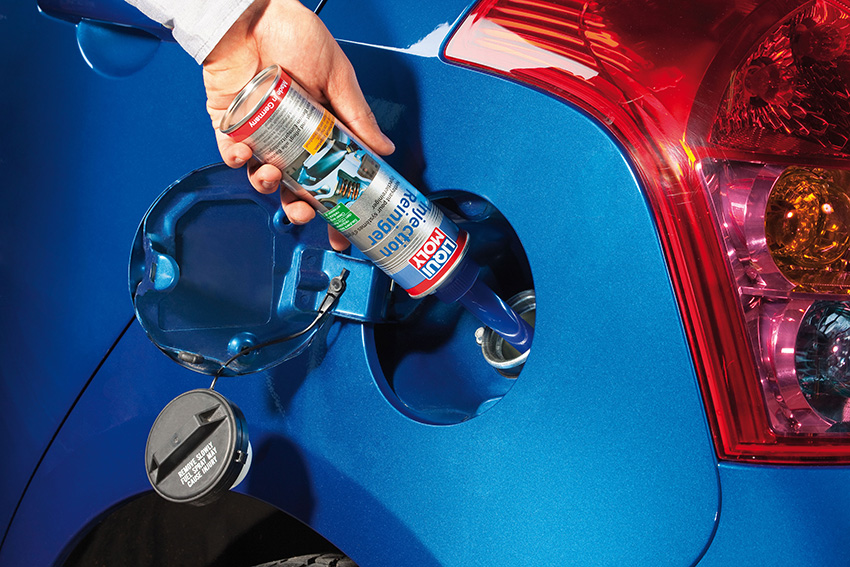
Injection Cleaning
Injector cleaners are nothing new, but do you have any evidence to prove they actually remove carbon deposits from around the nozzles of the injectors?
Every time the engine is running, the agents of injector cleaner pass the injector nozzles together with the petrol and remove some of the deposits. In the end the nozzles are cleared from encrusted deposits.
These photos show an injector before and after the application of injector cleaner. You will notice that the nozzles have been cleaned and are able to atomise the petrol properly again. The automotive lab APL tested the injector cleaner: one engine ran with petrol only, the other one with petrol and injection cleaner. After 60 hours the first engine collected 0.3 gram of deposits at each valve. The other engine was still clean with only 0.03 gram of deposits.
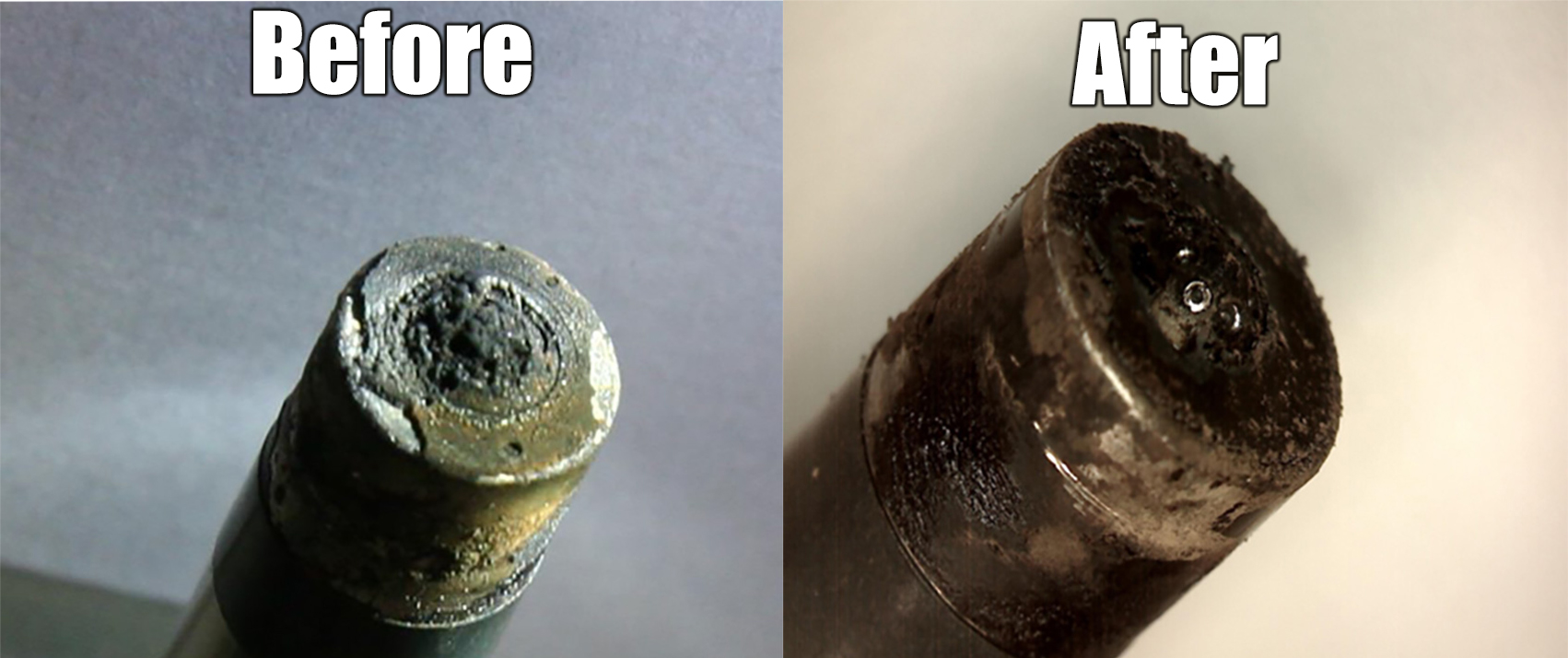
If an injector’s nozzles are covered in deposits, does this really cause problems? Remember that the fuel is being forced through under high pressure.
The problem is not that too little petrol gets into the combustion chamber. The problem is the spray pattern because the deposits prevent the petrol from being atomised properly anymore. The petrol does not burn as efficiently and cleanly as it should do. This results in increasing fuel consumption and decreasing power output. As this is a creeping process, the car driver often does not notice the continuous loss of performance. Furthermore, the less efficient combustion creates even more deposits which aggravate the problem – a vicious circle.





